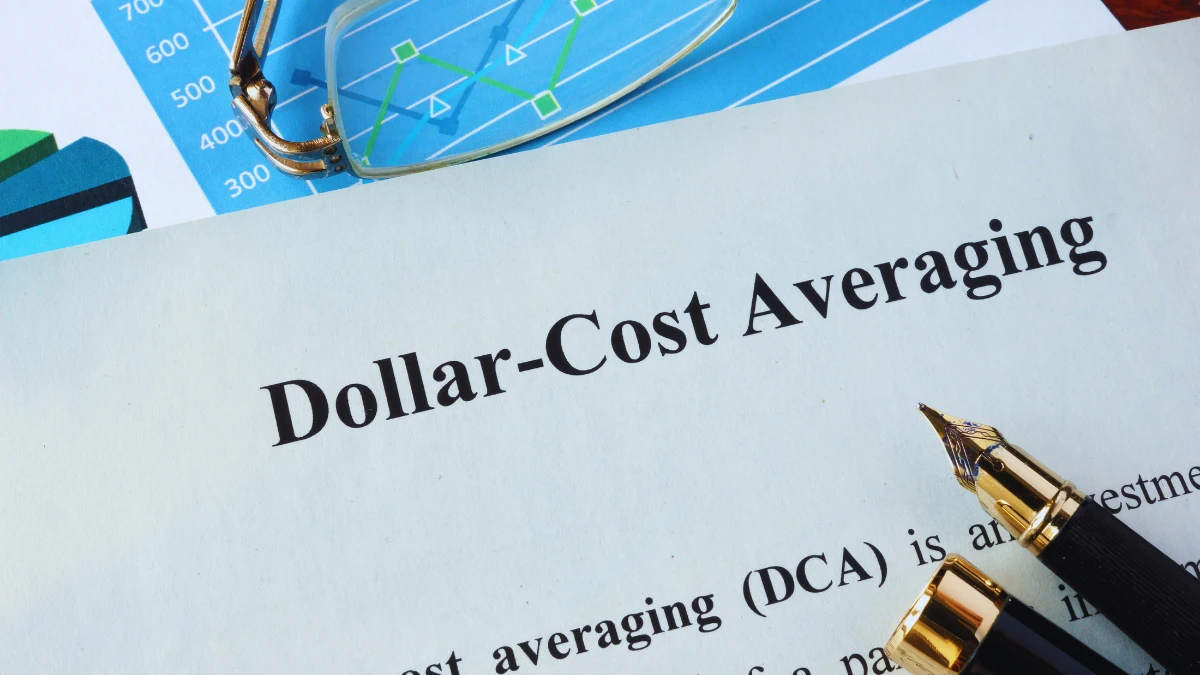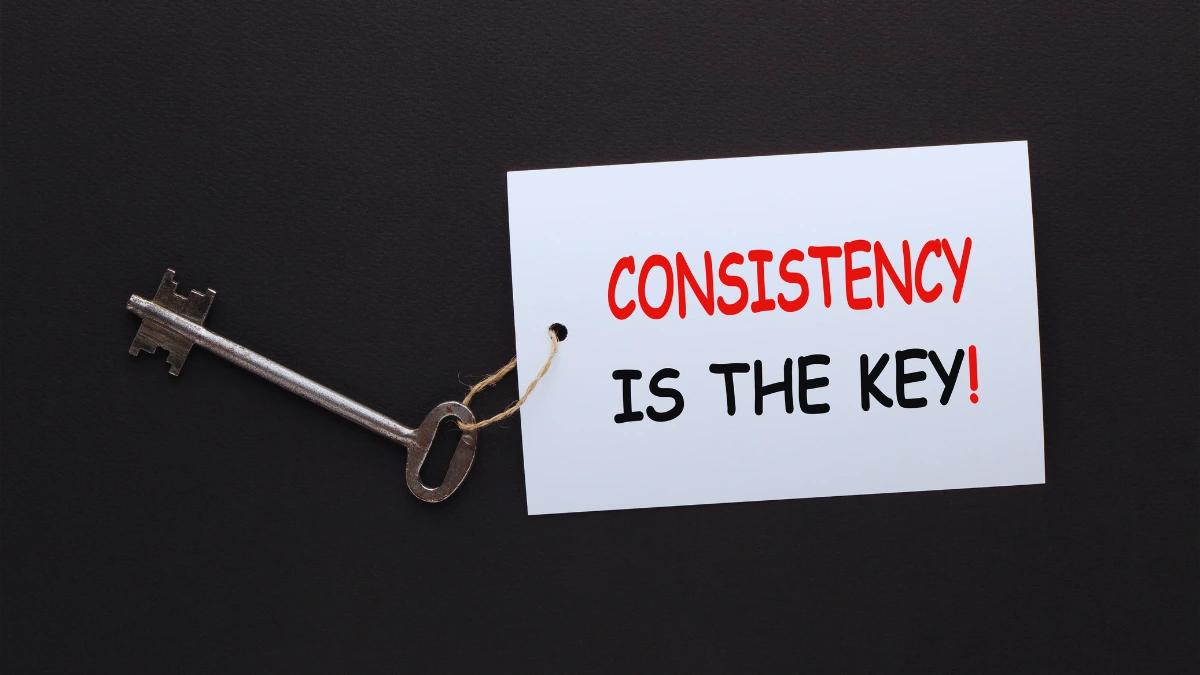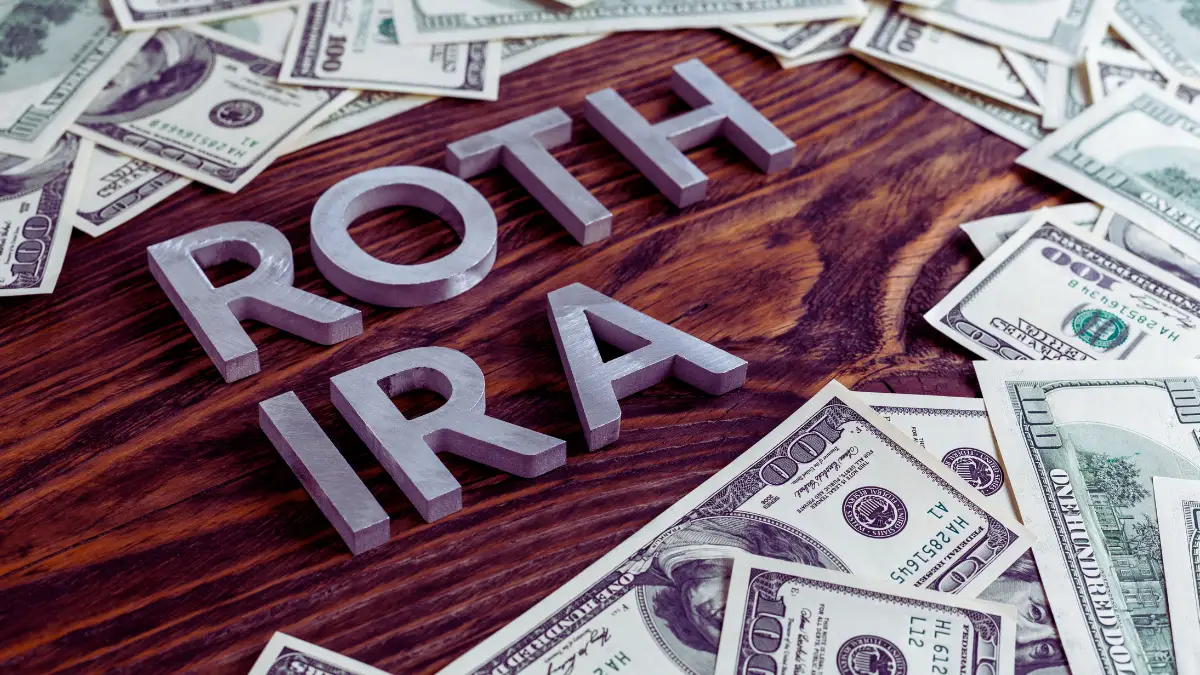March 2020. The stock market crashed 32% in one month. People were panicking, selling everything, moving money to savings accounts.
While everyone else was making emotional decisions, my computer quietly bought $500 worth of stock index funds. Just like it had done every month for the past five years.
I wasn’t being smart or brave. I had set up automatic investing years earlier and basically forgot about it. That $500 investment during the crash is now worth over $900.
Here’s the thing – I almost stopped it. The market looked so scary. What if I were wasting money? Thank goodness I didn’t.
This is how I invested $60,000 over 10 years using dollar-cost averaging. Through three market crashes and every scary headline in between. Here are my real numbers and exactly how you can copy what I did.
The Problem That Keeps You From Starting

You want to invest. But you’re scared. What if you buy right before a crash? What if you lose everything? What if there’s a better time to start?
I had the same fears in 2015. The market felt expensive. People said a crash was coming. So I did what most people do – I waited.
Bad idea.
Instead of trying to time the perfect moment, I started something simple. I decided to invest $500 every month, no matter what happened. This strategy is called dollar-cost averaging, or DCA for short.
Here’s my real 10-year story with actual numbers. Plus, show you how you can copy what I did.
What Dollar-Cost Averaging Really Means (And Why It Works)

Dollar-cost averaging means you invest the same amount of money every month. You don’t care if stocks are up or down. You just keep buying.
When prices are high, your $500 buys fewer shares. When prices are low, your $500 buys more shares. Over time, you end up with a lower average cost per share than if you had bought everything at once.
Here’s a simple example:
- Month 1: Stock costs $50, you buy 10 shares with your $500
- Month 2: Stock costs $25, you buy 20 shares with your $500
- Month 3: Stock costs $50, you buy 10 shares with your $500
You bought 40 shares for $1,500. Your average cost per share is $37.50. If you had bought all 40 shares in month 1, you would have paid $50 per share.
The magic happens during crashes. When everyone else is selling in panic, you’re buying more shares at cheap prices.
Charles Schwab research shows this helps you manage timing risk. You can’t predict when markets will crash or recover. But DCA lets you benefit from both.
My Complete 10-Year DCA Results: The Real Numbers

I started in January 2015 with a simple plan:
- Invest $500 every month
- Buy the same two funds every time
- Never stop, no matter what happens
The Setup:
- Total invested: $60,000 over 120 months
- Portfolio: 80% US stocks, 20% international stocks
- Platform: Started with Vanguard, later moved to Charles Schwab
- All dividends are reinvested automatically
The Results (as of December 2024):
- Portfolio value: $143,850
- Total return: $83,850 profit
- Average annual return: 9.2%
- Best year: 2021 (+28%)
- Worst year: 2022 (-18%)
That $500 monthly investment grew to almost $144,000. Not bad for doing basically nothing.
But here’s the important part. If I had invested all $60,000 as a lump sum in January 2015, I would have ended up with about $148,000. So yes, lump sum investing would have made me $4,000 more.
But there’s a catch. I didn’t have $60,000 sitting around in 2015. Most people don’t. DCA let me invest money as I earned it from my job.
Plus, DCA was way less stressful. I never had to make big decisions about when to invest. The computer handled everything.
How DCA Performed During 3 Major Market Crashes

My 10-year run included three scary market crashes. Here’s how DCA performed during each one:
2018 Market Correction (-20%)
What happened: Trade war fears and rising interest rates spooked investors.
My reaction: Kept investing $500 every month while everyone else panicked.
Result: Those “expensive” shares I bought during the crash looked cheap a year later.
2020 COVID Crash (-32%)
What happened: The fastest market crash in history. The S&P 500 fell from 3,380 to 2,280 in just one month.
My reaction: My automatic investment bought 40% more shares in March and April because prices were so low.
Result: This was the best thing that happened to my portfolio. Those crash-priced shares rode the recovery all the way up.
2022 Inflation Crash (-25%)
What happened: The Federal Reserve raised interest rates to fight inflation. Tech stocks got hammered.
My reaction: Honestly? I wanted to stop investing. It felt like throwing money away. But the automation kept going.
Result: By late 2023, the market recovered, and those 2022 purchases were profitable.
The key insight: Every crash felt terrible while it was happening. But DCA turned each crash into a buying opportunity. When markets recovered (and they always have), I owned more shares at lower prices.
The Apps and Tools That Made This Possible

In 2015, DCA wasn’t easy. Most brokers charged $7-10 per trade. You needed thousands of dollars to start. Fractional shares didn’t exist.
Everything changed by 2020. Now you can start DCA with $1. Here are the best platforms for 2025:
For Beginners: Acorns
- Automatically invests your spare change
- Starts with just $5
- Simple interface designed for new investors
- Downside: $3-12 monthly fees can hurt small accounts
For Serious Investors: Charles Schwab
- $0 trades on stocks and ETFs
- Fractional shares available
- Automatic investing tools
- Excellent research and customer service
For Hands-Off Investors: Wealthfront
- Builds and manages your portfolio automatically
- Tax-loss harvesting to reduce taxes
- 0.25% annual fee (reasonable for the service)
- Rebalances your portfolio automatically
For Tech-Savvy Users: M1 Finance
- Create custom portfolios with up to 100 stocks/ETFs
- Automatic rebalancing
- No management fees
- “Pie” system makes portfolio building visual
The best part about 2025? All these apps make DCA completely automatic. You set it up once and forget about it.
What I Learned: The Psychology of Staying Consistent

The hardest part of DCA wasn’t the market crashes. It was the boring middle years.
2016-2017: Markets kept going up. I felt stupid buying “expensive” stocks every month. Why not wait for a dip?
2019: Everyone was talking about the next recession. Maybe I should stop investing and wait?
2021: Stocks went crazy. My coworkers were day trading and making quick profits. My slow DCA strategy felt boring.
Here’s what I learned: Your brain will find a million reasons to stop DCA. Markets are “too high” or “about to crash” or “going to the moon without you.”
Automation saved me from myself. I couldn’t stop the investments even when I wanted to. This was the best feature of my strategy.
A Merrill Lynch investment strategist put it perfectly: “Volatility is a normal part of investing. Dollar-cost averaging helps you filter the noise and view weakness as buying opportunities.”
The key is removing emotion from the process. When you invest automatically, you can’t make emotional mistakes.
The Math Behind My 10-Year Success

Let me break down exactly how the numbers worked:
Total Contributions by Year:
- 2015-2019: $30,000 invested, portfolio grew to $41,200
- 2020: $6,000 invested during the crash, year-end value: $52,800
- 2021: $6,000 invested during recovery, year-end value: $73,600
- 2022: $6,000 invested during inflation crash, year-end value: $61,200
- 2023-2024: $12,000 invested during recovery, final value: $143,850
The Power of Dividend Reinvestment: My index funds paid dividends every quarter. Instead of taking cash, I reinvested every penny. Over 10 years, this added about $8,000 to my final total.
Best Single Investment: March 2020. I invested $500 when the S&P 500 was at 2,280. That money is now worth over $900.
Worst Single Investment: January 2022. I invested $500 when the market was near all-time highs. That money lost 25% by October 2022. But it’s profitable again now.
The Compound Effect: Early investments had more time to grow. My first $500 from January 2015 is now worth about $1,200. My most recent $500 investments are still close to $500.
This shows why starting early matters more than timing the market perfectly.
How to Start Your Own DCA Strategy Today

Ready to copy my results? Here’s exactly what to do:
Step 1: Pick Your Monthly Amount
Start small. Even $50 per month adds up over time. You can always increase it later.
Don’t invest money you’ll need within 5 years. This is for long-term goals only.
Step 2: Choose Your Platform
For beginners: Start with Acorns or SoFi. Simple setup, good education. For serious investors: Charles Schwab or Fidelity. More options, better tools. For a hands-off approach: Wealthfront or Betterment. They handle everything.
Step 3: Select Your Investments
Keep it simple. I recommend starting with just two funds:
- 70-80% Total Stock Market Index (like VTI or FZROX)
- 20-30% International Index (like VXUS or FTIHX)
Don’t overthink this. Simple portfolios often beat complex ones.
Step 4: Set Up Automation
This is the most important step. Set up automatic transfers from your checking account. Pick a date that works with your paycheck.
Most platforms let you set this up in 5 minutes. Do it right after you open your account.
Step 5: Enable Dividend Reinvestment
Make sure dividends automatically buy more shares. This is free money that compounds over time.
Step 6: Don’t Touch It
The hardest part. Check your account maybe once per quarter. Don’t make changes based on market news.
Remember: Time in the market beats timing the market.
5 Expensive Mistakes That Almost Ruined My Strategy

I wasn’t perfect. Here are the costly mistakes I made (and how you can avoid them):
Mistake 1: Stopping During Bull Markets (2017)
I stopped investing for 3 months because stocks felt “too expensive.” Those missed investments would be worth $2,000 more today.
Lesson: Markets always feel expensive at the top. Keep investing anyway.
Mistake 2: Trying to Time Better Entry Points (2018)
I held off investing my December payment, waiting for a bigger crash. The market bounced back, and I bought at higher prices.
Lesson: You can’t time the market. Stick to your schedule.
Mistake 3: Picking Expensive Funds (2015-2016)
I started with actively managed funds that charged 1% annual fees. Over 10 years, those fees would have cost me about $5,000.
Lesson: Choose low-cost index funds. Fees compound just like returns.
Mistake 4: Not Maxing Out Tax-Advantaged Accounts First
I split my $500 between a taxable account and my Roth IRA. I should have maxed out the Roth first for tax-free growth.
Lesson: Fill up your 401(k) and IRA before investing in taxable accounts.
Mistake 5: Checking Too Often
In 2020, I checked my account daily during the crash. This made me want to stop investing when I should have been excited about low prices.
Lesson: Quarterly check-ins are enough. Daily checking leads to emotional decisions.
Research from Fidelity confirms that DCA doesn’t guarantee profits, but it does help manage timing risk. My mistakes prove this point. Every time I tried to be clever, I hurt my results.
Why This Strategy Works in Any Market

DCA isn’t magic. It won’t protect you from all losses. During the 2022 crash, my account dropped $15,000 in value. That hurt.
But DCA gives you two key advantages:
Advantage 1: You Buy More Shares During Crashes
When the 2020 crash hit, my $500 bought 40% more shares than normal. When markets recovered, those extra shares drove most of my gains.
Advantage 2: You Avoid Emotional Decisions
The biggest investment returns come right after crashes. But that’s exactly when most people are too scared to invest. Automation keeps you investing when emotions would stop you.
Historical data show the S&P 500 has recovered from every crash in history. Usually within 2 years. DCA helps you benefit from this pattern without trying to predict when it will happen.
What Would I Do Differently?

After 10 years of DCA, here’s what I would change:
Start with more international exposure. My 20% international allocation was too low. Global diversification helps during US market downturns.
Use a Roth IRA for everything. Tax-free growth for 30+ years beats the small tax deduction from traditional accounts.
Increase contributions annually. I kept investing $500 per month for 10 years. I should have increased it with my salary raises.
Ignore market predictions. I wasted time reading market forecasts. Nobody can predict short-term market moves. Focus on long-term trends instead.
Automate everything earlier. I started with manual investments and switched to automation after 2 years. Automation from day one would have prevented my emotional mistakes.
But overall? I’m happy with my results. DCA turned me from a scared investor into someone with a six-figure portfolio.
Your Next Steps: Start Small, Start Today

Here’s what to do right now:
- Pick a platform. Schwab, Fidelity, or Acorns all work well for beginners.
- Start with $50-100 per month. You can increase this later as your income grows.
- Choose simple index funds. The Total Stock Market Index + International Index covers the basics.
- Set up automatic investing. This is the most important step. Don’t skip it.
- Enable dividend reinvestment. Free money that compounds over time.
- Don’t check your account for 3 months. Give yourself time to build the habit without emotional interference.
You don’t need perfect timing. You don’t need a lot of money. You just need to start and stay consistent.
My $60,000 in DCA investments became $143,850 over 10 years. Not because I was smart or lucky. Because I kept it simple and stayed consistent through three market crashes.
The best time to start DCA was 10 years ago. The second-best time is today.
Total invested: $60,000
Total return: $83,850 profit
Average annual return: 9.2%
Time spent managing: About 2 hours per year
That’s the power of dollar-cost averaging. Set it up once, let time do the work, and build wealth while you sleep.
Ready to start? Pick a platform, choose an amount, and set up your first automatic investment today. Your future self will thank you.
